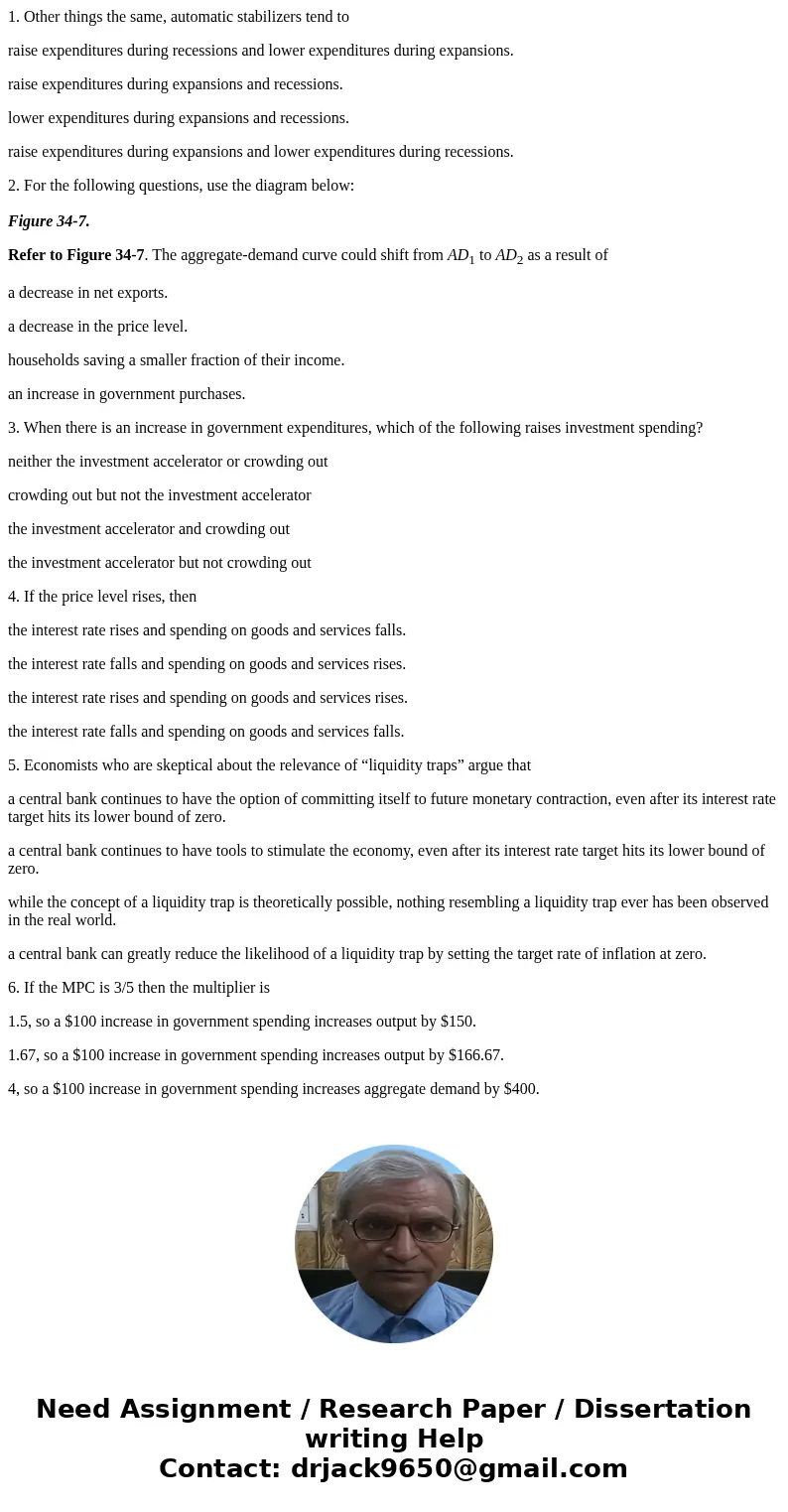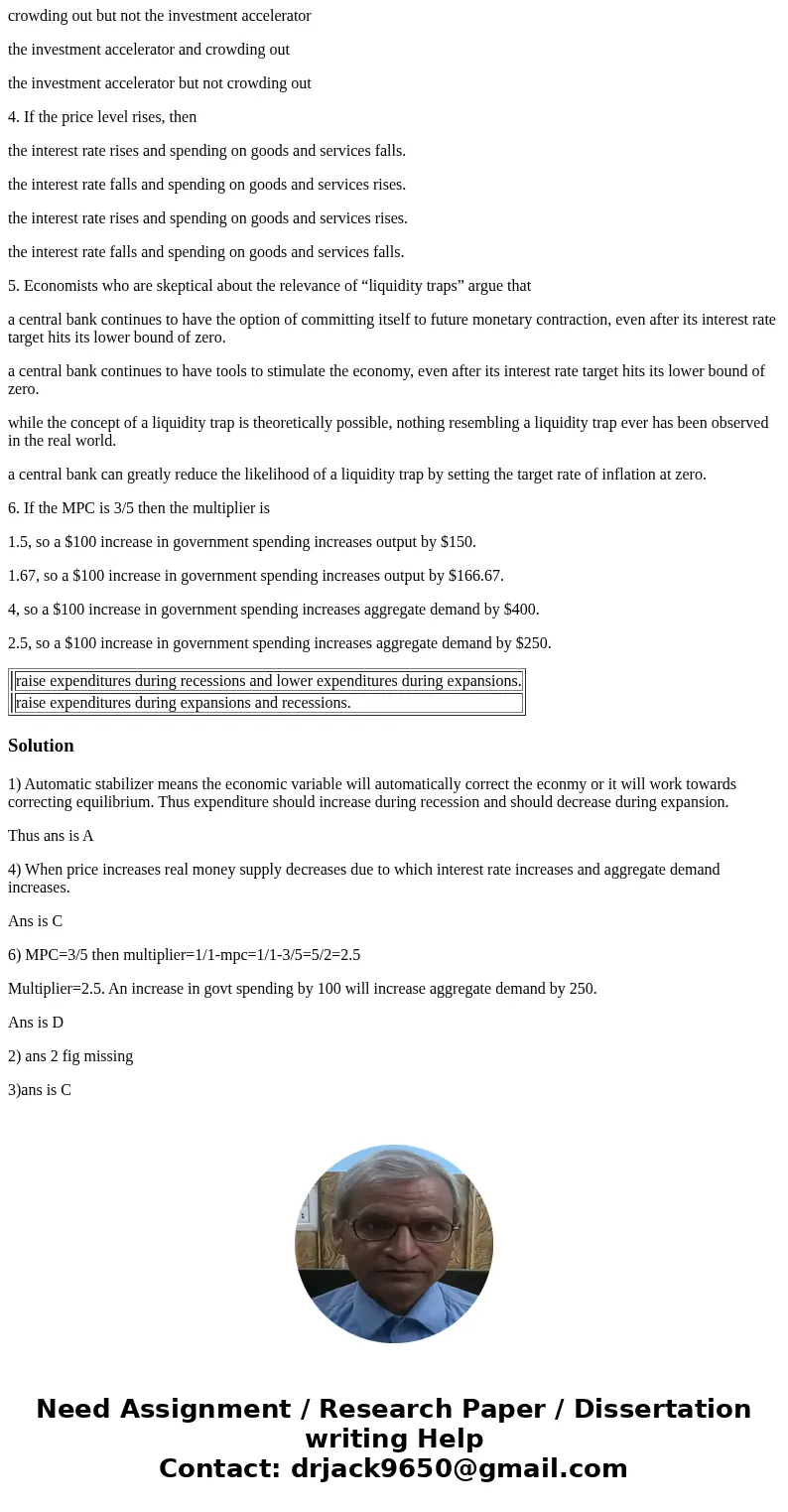1 Other things the same automatic stabilizers tend to raise
1. Other things the same, automatic stabilizers tend to
raise expenditures during recessions and lower expenditures during expansions.
raise expenditures during expansions and recessions.
lower expenditures during expansions and recessions.
raise expenditures during expansions and lower expenditures during recessions.
2. For the following questions, use the diagram below:
Figure 34-7.
Refer to Figure 34-7. The aggregate-demand curve could shift from AD1 to AD2 as a result of
a decrease in net exports.
a decrease in the price level.
households saving a smaller fraction of their income.
an increase in government purchases.
3. When there is an increase in government expenditures, which of the following raises investment spending?
neither the investment accelerator or crowding out
crowding out but not the investment accelerator
the investment accelerator and crowding out
the investment accelerator but not crowding out
4. If the price level rises, then
the interest rate rises and spending on goods and services falls.
the interest rate falls and spending on goods and services rises.
the interest rate rises and spending on goods and services rises.
the interest rate falls and spending on goods and services falls.
5. Economists who are skeptical about the relevance of “liquidity traps” argue that
a central bank continues to have the option of committing itself to future monetary contraction, even after its interest rate target hits its lower bound of zero.
a central bank continues to have tools to stimulate the economy, even after its interest rate target hits its lower bound of zero.
while the concept of a liquidity trap is theoretically possible, nothing resembling a liquidity trap ever has been observed in the real world.
a central bank can greatly reduce the likelihood of a liquidity trap by setting the target rate of inflation at zero.
6. If the MPC is 3/5 then the multiplier is
1.5, so a $100 increase in government spending increases output by $150.
1.67, so a $100 increase in government spending increases output by $166.67.
4, so a $100 increase in government spending increases aggregate demand by $400.
2.5, so a $100 increase in government spending increases aggregate demand by $250.
| raise expenditures during recessions and lower expenditures during expansions. | |
| raise expenditures during expansions and recessions. |
Solution
1) Automatic stabilizer means the economic variable will automatically correct the econmy or it will work towards correcting equilibrium. Thus expenditure should increase during recession and should decrease during expansion.
Thus ans is A
4) When price increases real money supply decreases due to which interest rate increases and aggregate demand increases.
Ans is C
6) MPC=3/5 then multiplier=1/1-mpc=1/1-3/5=5/2=2.5
Multiplier=2.5. An increase in govt spending by 100 will increase aggregate demand by 250.
Ans is D
2) ans 2 fig missing
3)ans is C


 Homework Sourse
Homework Sourse